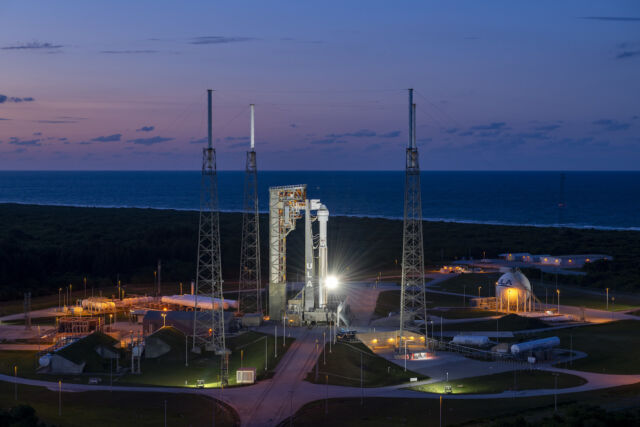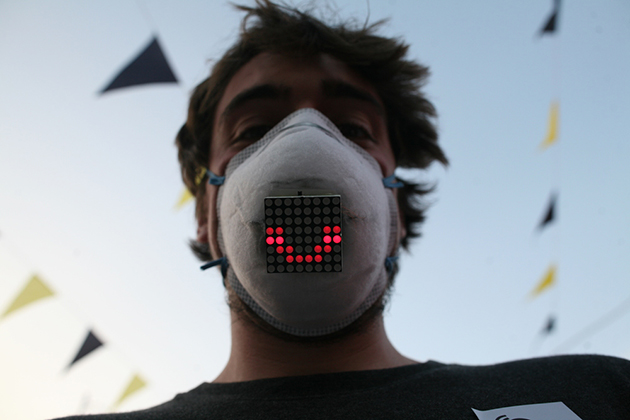A computer controlling the Atlas V rocket’s countdown triggered an automatic hold less than four minutes prior to liftoff of Boeing’s commercial Starliner spacecraft Saturday, keeping the crew test flight on the ground at least a few more days.
NASA astronauts Butch Wilmore and Suni Williams were already aboard the spacecraft when the countdown stopped due to a problem with a ground computer. “Hold. Hold. Hold,” a member of Atlas V launch team called out on an audio feed.
With the hold, the mission missed an instantaneous launch opportunity at 12:25 pm EDT (16:25 UTC), and later Saturday, NASA announced teams will forego a launch opportunity Sunday. The next chance to send Starliner into orbit will be 10:52 am EDT (14:52 UTC) Wednesday. The mission has one launch opportunity every one-to-two days, when the International Space Station’s orbital track moves back into proper alignment with the Atlas V rocket’s launch pad in Florida.
Wilmore and Williams will take the Starliner spacecraft on its first crew flight into low-Earth orbit. The capsule will dock with the International Space Station around a day after launch, spend at least a week there, then return to a parachute-assisted landing at one of two landing zones in New Mexico or Arizona. Once operational, Boeing’s Starliner will join SpaceX’s Crew Dragon capsule to give NASA two independent human-rated spacecraft for transporting astronauts to and from the space station.
It’s been a long road to get here with the Starliner spacecraft, and there’s more work to do before the capsule’s long-delayed first flight with astronauts.
Technicians from United Launch Alliance, builder of the Atlas V rocket, will begin troubleshooting the computer glitch at the launch pad Saturday evening, after draining propellant from the launch vehicle. Early indications suggest that a card in one of three computers governing the final minutes of the Atlas V’s countdown didn’t boot up as quickly as anticipated.
“You can imagine a large rack that is a big computer where the functions of the computer as a controller are broken up separately into individual cards or printed wire circuit boards with their logic devices,” said Tory Bruno, ULA’s president and CEO. “They’re all standalone, but together it’s an integrated controller.”
The computers are located at the launch pad inside a shelter near the base of the Atlas V rocket at Cape Canaveral Space Force Station. All three computers must be fully functioning in the final phase of the countdown to ensure triple redundancy. At the moment of liftoff, these computers control things like retracting umbilical lines and releasing bolts holding the rocket to its mobile launch platform.
Two of the computers activated as the final countdown sequence began at T-minus 4 minutes. A single card in the third computer took about six more seconds to come online, although it did boot up eventually, Bruno said.
“Two came up normally and the third one came up, but it was slow to come up, and that tripped a red line,” he said.
A disappointment
Wilmore and Williams, both veteran astronauts and former US Navy test pilots, exited the Starliner spacecraft with the help of Boeing’s ground team. They returned to NASA crew quarters at the nearby Kennedy Space Center to wait for the next launch attempt.
The schedule for the next try will depend on what ULA workers find when they access the computers at the launch pad. Officials initially said they could start another launch countdown early Sunday if they found a simple solution to the computer problem, such as swapping out a faulty card. The computers are networked together, but the architecture is designed with replaceable cards, each responsible for different functions during the countdown, to allow for a quick fix without having to replace the entire unit, Bruno said.

Later Saturday, NASA announced the launch won’t happen Sunday, giving teams additional time to assess the computer issue. The next launch opportunities are Wednesday and Thursday.
Bruno said ULA’s engineers suspect a hardware problem or a network communication glitch caused the computer issue during Saturday’s countdown. That is what ULA’s troubleshooting team will try to determine overnight. NASA said officials will share another update Sunday.
If it doesn’t get off the ground by Thursday, the Starliner test flight could face a longer delay to allow time for ULA to change out limited-life batteries on the Atlas V rocket. Bruno said the battery swap would take about 10 days.
Saturday’s aborted countdown was the latest in a string of delays for Boeing’s Starliner program. The spacecraft’s first crew test flight is running seven years behind the schedule Boeing announced when NASA awarded the company a $4.2 billion contract for the crew capsule in 2014. Put another way, Boeing has arrived at this moment nine years after the company originally said the spacecraft could be operational, when the program was first announced in 2010.
“Of course, this is emotionally disappointing,” said Mike Fincke, a NASA astronaut and a backup to Wilmore and Williams on the crew test flight. “I know Butch and Suni didn’t sound disappointed when we heard them on the loops, and it’s because it comes back to professionalism.”
NASA and Boeing were on the cusp of launching the Starliner test flight May 6, but officials called off the launch attempt due to a valve problem on the Atlas V rocket. Engineers later discovered a helium leak on the Starliner spacecraft’s service module, but managers agreed to proceed with the launch Saturday if the leak did not worsen during the countdown.
A check of the helium system Saturday morning showed the leak rate had decreased from a prior measurement, and it was no longer a constraint to launch. Instead, a different problem emerged to keep Starliner on Earth.
“Everybody is a little disappointed, but you kind of roll your sleeves up and get right back to work,” said Steve Stich, manager of NASA’s commercial crew program.



